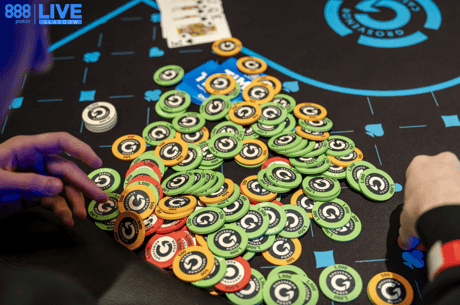Making the Transition from Pot Limit to Limit, Part Two

In part one of this article, we discussed the theories that should apply to those making the tranistion from Pot or No Limit to Limit Poker, which we are seeing more and more of these days. You may want to check out Part One before you read this if you haven't yet.
PART TWO
Given what we discussed yesterday, the best advice I can give about bluffing in limit is this:
a) Be prepared to give up a bluff at the earliest available opportunity. If you have KQ and the flop is A-6-2 and you get two or more callers when you bet, give it on the turn. If it is checked on the turn and river and you end up winning, so be it. But there are too many limit players who are willing to check and call with hands like 5-5 or A-7 in this situation, but they would never bet their hands. This is the opposite of pot limit, where players with these sorts of hands have the leverage to make tricky raises that will often win them the pot.
b) Predetermine whether your opponents fold. Be observant at the table and work out which opponents are capable of folding and which are not. Bluffing is calling station in limit is impossible. Bluffing a tight player has a higher chance of success. Part of getting your timing right is choosing short handed pots where your opponents are relatively tight players.
c) Bet when you catch a read that none of your opponents have a hand or a draw worth pursuing. Reading opponents is a critical tool for bluffing in limit poker. The moment you realize that none of your opponents have anything, fire in a bluff. However, if the moment you feel that one or more of your opponents will call you the whole way, give it up at the next opportunity. This does not necessarily mean that you should never continue a bluff on the turn if two opponents called you on the flop. On the contrary, many opponents will throw you a loose call on the flop with any sort of hand. But most of them decide on the turn whether to call all the way or give it up. Therefore, you should keep in mind that if they call you on the flop and turn, there is a considerable chance that they will call you on the river.
FOUR: Big hands don't always make big pots
Often in pot limit, you can expect a big pot when you have A-A vs K-K on a flop of 9-5-2 or Q-Q vs A-K on a flop of Q-J-10. But in limit, big pots often arise when there are a number of substandard hands that all have a piece of the flop. For example, the largest pot I have ever won in a limit game was with 6c-2c. In that hand, the flop came 3h-4s-5h and seven players were in the pot. On that flop, three players had a flush draws: Qh-7h, Ah-9h and 10h-8h; two other players had an ace in the hole: A-4, A-8. As fortune would have it, a 2 fell on the river.
This goes to show you that in many limit games, a large pot can arise when few players (if any) are holding premium starting cards. By contrast, big pots in pot limit poker usually arise in AA v AK or set versus set situations. So don't get stuck in a large pot in limit poker, calling raises left, right and centre with KK on a flop of 8-7-5. You can expect to be up against straights, two pairs and/or sets when there is heavy action on these types of flops.
FIVE: With less protection, expect more of a roller coaster
The simple truth of limit is that your 'win rate' is lower. You will have more hands cracked than in pot limit so simply be prepared for it. And don't think it's impossible for someone to have chased you down with the most bizarre draws.
Not long ago, I had KK and raised before the flop. One loose player decided to call. The flop was Kc-10d-5h. I bet and he called. The river was a 6s. Again I bet and he called. On the river, a 4h came. I bet and he raised. I simply called and he rolled over 2c-3c. He had beaten me in the most horrible fashion. Whatever possessed him to call me before the flop, on the flop and even on the turn is beyond any reasonable player's comprehension. But this does happen in limit and while you may consider a reraise in this situation in pot limit (on the assumption that your opponent was slowplaying a lower set) this is a big no-no in limit.
But it is equally important to maintain control of yourself. A lot of players can tolerate a bad beat here and there without their game falling apart. I have seen many players exercise extreme discipline in the face of beat after beat after beat. But all of a sudden, they are in every pot, checking and calling the whole way with weak, loose rubbish that has little chance of winning. It doesn't take long to shoot off your stack when you go on tilt in limit, so be mentally prepared for some of the standard and obscure beats that occur. While it is a roller coaster for most players, the idea is try and give the roller coaster an ascending incline... if you get my meaning.
While there are many other factors that I have not covered here, these are points which require significant attention if you are a regular pot limit player playing in a limit game. Experience counts, but these pointers should certainly be kept in mind when making the sideways transition. Good luck.
Ed Note: Poker Stars have our highest rated tournaments, find out why









